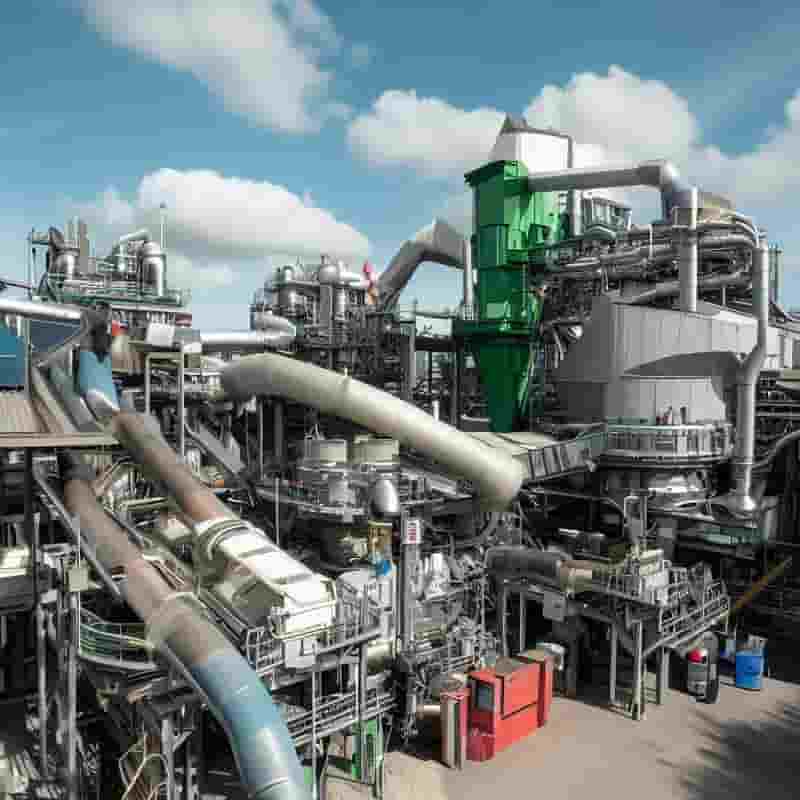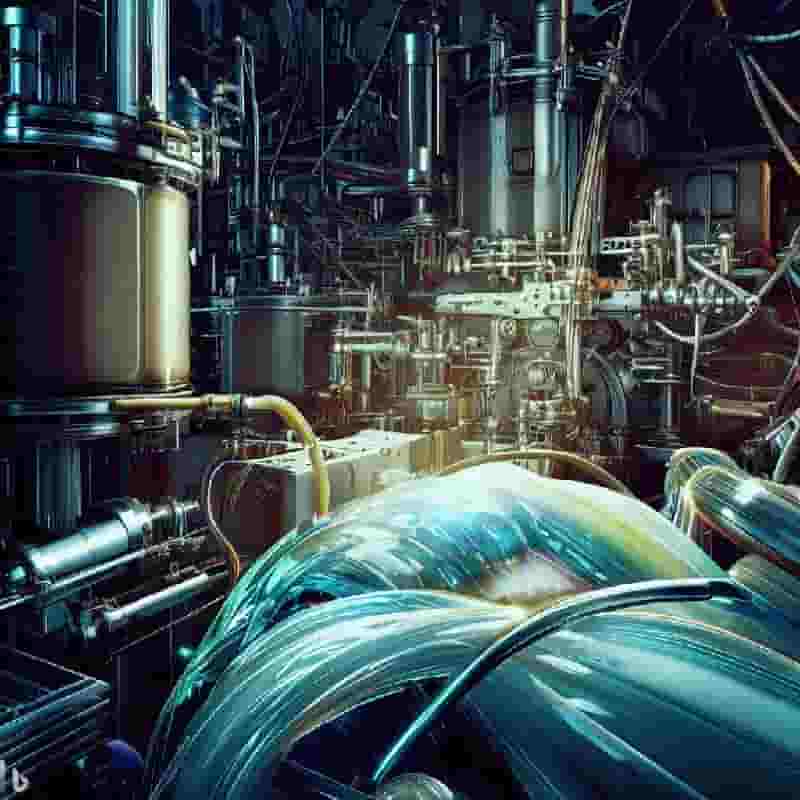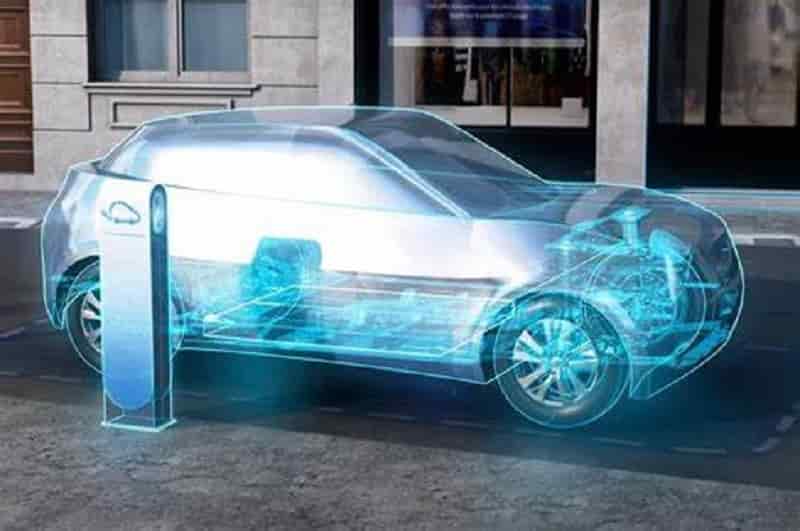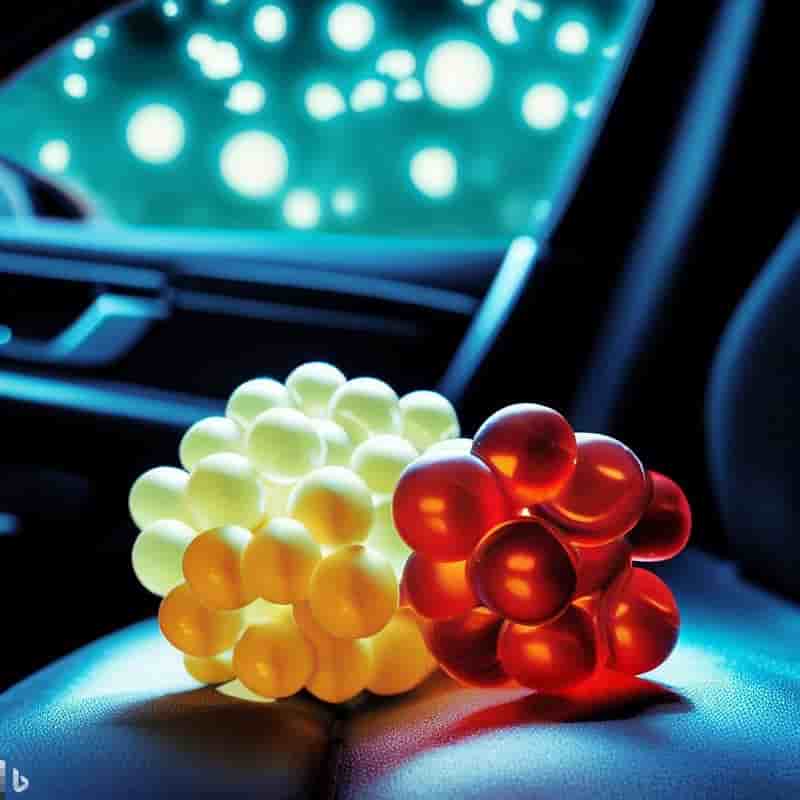Plastics Recycling Smart Textiles – Polyamide Recycling : A Sustainable Solution for a Circular Economy 05-08-2023 - Arhive
Plastics Recycling Smart Textiles
Lindner & Erema: Pioneering the Future of Plastics Recycling
Spittal an der Drau/Ansfelden (Austria), August 2023. In a bid to revolutionize plastics recycling, the visionary owners of Erema Group and Lindner Holding have come together to form a formidable partnership. The newly founded holding company, BLUEONE Solutions, aims to combine the expertise of both companies and embark on collaborative research projects to establish industry standards in plastics recycling.
The journey from waste to recycled granulate involves a series of intricate recycling processes, including sorting, shredding, washing, drying, extrusion, filtration, compounding, and odor optimization. Achieving high-quality recycled materials while maintaining energy efficiency remains a significant challenge for the industry. BLUEONE Solutions, equally owned by Erema Group and Lindner Holding, with contributions from Lindner Washtech, emerges as the catalyst for progress in this domain. By amalgamating the know-how and experience of Lindner Washtech and the extrusion prowess of Erema, the aim is to unlock greater value and establish industry benchmarks through process optimization and joint research initiatives. Plastics Recycling Smart Textiles
The partnership brings together two powerhouses in the field: the Erema Group, a leading force in plastics recycling for four decades, renowned for its expertise in extrusion, and Lindner, a trusted manufacturer of shredders and recycling facilities with a global presence in the waste management industry for over 75 years. In the last decade, Lindner has earned recognition as a specialist in washing facilities under the Lindner Washtech brand. The companies had already embarked on collaborative research ventures, exemplified by the pilot facilities at the LIT Factory in Johannes Kepler University (JKU) Linz, fostering a close technical exchange.
Shared Vision Erema and Lindner have long shared a common vision of driving forward the plastics recycling industry. As the challenges in the market continue to escalate, BLUEONE Solutions emerges as a response to the pressing need for process optimization. The joint venture recognizes that optimal utilization of waste streams is essential to make sufficient quantities of regranulate available. This requires seamless coordination of processes between various recycling stages to enhance efficiency and optimize quality. The merging of waste management and recycling management is seen as a pivotal step towards achieving a functioning circular economy. “Our common goal is clearly to set new industry standards,” emphasizes Michael Lackner, Managing Director of Lindner.
Streamlining Recycling Processes With the establishment of BLUEONE Solutions, the focus is set firmly on the advancement of plastics recycling. Lindner brings its wealth of experience in waste stream processing and expertise in washing, while Erema contributes its in-depth knowledge in extrusion and filtration. Together, they envision a holistic approach that encompasses the entire process and value chain – from waste collection and processing to recycling and the final plastic product. Plastics Recycling Smart Textiles
The synergy between the recycling extruder, the upstream washing system, and material handling allows for seamless coordination, ensuring that quality standards are consistently met while optimizing energy consumption through cross-process control and monitoring. Digital solutions play a key role in supporting these endeavors. “In the future, we will offer optimally coordinated all-in-one solutions that will enable our clients to buy a total package that is perfectly tailored to their needs,” explains Manfred Hackl, CEO of the EREMA Group.
In particular, the collaboration seeks to spearhead advancements in the polyolefins sector, a critical domain in plastics recycling. By leveraging their combined expertise, Erema and Lindner aim to unlock the full potential of plastics recycling and drive the industry towards a more sustainable future.
In conclusion, BLUEONE Solutions stands as a beacon of hope in the plastics recycling industry, combining the strengths of Erema and Lindner to set new industry benchmarks. With their shared vision, commitment to innovation, and focus on optimizing recycling processes, they are paving the way for a greener and more sustainable tomorrow. As the world grapples with the plastic waste crisis, this alliance provides a glimmer of optimism and a reminder that solutions can be found through collaboration, expertise, and determination. Plastics Recycling Smart Textiles

SiC: Paving the Way for the Cars of the Future
Silicon carbide (SiC), a quasi-diamond material, is revolutionizing the world of electric vehicles (EVs). Born out of an accidental discovery in 1891, SiC has emerged as a strategic asset in the production of cutting-edge electric cars. With its unique properties and potential to enhance the efficiency of EVs, SiC is being hailed as the material that will drive the cars of the future.
At the heart of electric vehicles lies the inverter, a crucial component responsible for converting direct current from batteries into alternating current to power the motors and regulate their output. Analogous to the carburetor or injection system in traditional internal combustion engine cars, the inverter’s performance significantly impacts the overall efficiency and range of electric vehicles. While most inverters currently use silicon-based power transistors, SiC-based transistors, known as silicon carbide MOSFETs, have shown exceptional promise due to their superior stability at high voltages, compact size, reduced weight, ability to withstand high temperatures exceeding 200 °C, lower heat loss conversion (about 70% less), and operation at higher frequencies.
The advantages of SiC inverters are not limited to efficiency gains.
They enable the use of high charging voltages, such as 800V, which drastically reduces charging times. Plastics Recycling Smart Textiles
Several automakers have already embraced 800V charging systems in models like the Porsche Taycan, Hyundai EV6 and Ioniq 5 and 6, Audi e-tron GT, and Lucid Air. However, Tesla, an early adopter of SiC inverters in their Model 3 since 2018, has not fully exploited the potential of 800V charging due to the substantial overhaul required for its Supercharger network.
As the demand for SiC-equipped electric cars grows, many prominent brands are aligning with leading microelectronics companies to secure a stable supply of SiC components. Mercedes and Jaguar Land Rover have partnered with Wolfspeed, BMW with Onsemi, Renault Nissan with STMicroelectronics, and Toyota with Denso.
Although SiC-based components offer immense benefits, their production is complex and costly. The process demands extreme temperatures of 2,500 degrees Celsius and high pressure, resulting in higher manufacturing expenses. Additionally, a significant percentage of produced “wafers” are discarded due to surface defects. However, experts predict that with increasing production volumes, the defect rate will decrease over time.
While SiC components currently come with a higher price tag, Tesla has announced plans to reduce their reliance on SiC by 75% to cut costs. Plastics Recycling Smart Textiles
This move is expected to lead to a $1,000 reduction in production costs per vehicle in a future “low-cost” platform. Currently, SiC-based technologies, along with 800V charging, are primarily directed at high-end models. However, market forecasts suggest that by 2035, the cost of SiC components will decrease significantly, making it a dominant feature across all electric vehicle segments.
The advent of SiC has brought electric vehicles closer to achieving widespread adoption and acceptance. As technological advancements and increased production continue to lower costs, SiC-equipped electric cars will likely become more accessible to the general public. With the promise of increased range, faster charging times, and improved efficiency, SiC is undoubtedly paving the way for the cars of the future. Embracing SiC technology now will not only revolutionize the automotive industry but also accelerate the global transition towards a sustainable and eco-friendly future.
![]()
Polyamide Recycling: A Sustainable Solution for a Circular Economy
The growing concerns about environmental sustainability have prompted industries and consumers alike to seek eco-friendly alternatives. One such area of focus is polyamide recycling, which offers a promising solution to tackle plastic waste and reduce the environmental impact. Polyamide, commonly known as nylon, is a versatile and widely-used material in various applications, from textiles and automotive components to electronics and packaging. However, its disposal has posed significant challenges due to its non-biodegradable nature. In this article, we explore the importance of polyamide recycling, its benefits, and the innovations driving this sustainable initiative towards a circular economy. Plastics Recycling Smart Textiles
- The Urgency of Polyamide Recycling
As the production of polyamide continues to increase, so does the burden on the environment. Discarded nylon products often end up in landfills or water bodies, taking hundreds of years to decompose. Consequently, plastic pollution becomes a severe threat to ecosystems, marine life, and human health. By embracing polyamide recycling, we can minimize waste, conserve resources, and reduce the ecological footprint associated with virgin nylon production.
- Key Benefits of Polyamide Recycling
2.1. Conservation of Resources
Polyamide recycling aims to recover and reuse valuable materials from discarded products. This process reduces the demand for virgin raw materials, such as crude oil, which is a primary feedstock for nylon production. By conserving these non-renewable resources, we can create a more sustainable future for generations to come.
2.2. Energy Savings and Emissions Reduction
Recycling polyamide requires significantly less energy than producing it from scratch. The energy savings translate into reduced greenhouse gas emissions, helping combat climate change and mitigating the environmental impact of the nylon industry.
2.3. Waste Reduction and Landfill Diversion
Recycling polyamide products diverts them from landfills, where they would otherwise remain for centuries. Reducing the burden on landfills not only helps conserve space but also prevents potential leaching of harmful chemicals into the soil and groundwater.
- Challenges in Polyamide Recycling
While polyamide recycling offers substantial benefits, it does come with some challenges that need to be addressed. Plastics Recycling Smart Textiles
3.1. Sorting and Contamination
One of the primary challenges in nylon recycling is sorting different types of polyamide and removing contaminants, such as dyes, additives, and other plastic materials. Advanced sorting technologies and increased consumer awareness are crucial to improve the quality of recycled polyamide.
3.2. Depolymerization Technology
Traditional recycling methods involve mechanical processes, but they may not be suitable for all polyamide products. Depolymerization, a chemical recycling method, holds promise in breaking down complex nylon structures into their original monomers, enabling the production of high-quality recycled nylon.
- Innovations in Polyamide Recycling
The recycling industry is witnessing innovative advancements that improve the efficiency and scalability of polyamide recycling. Plastics Recycling Smart Textiles
4.1. Enzymatic Recycling
Researchers are exploring the use of enzymes to break down polyamide materials, making the recycling process more efficient and environmentally friendly. Enzymatic recycling shows great potential in handling mixed and contaminated nylon waste.
4.2. Circular Design Principles
Designers and manufacturers are embracing circular economy principles, ensuring that polyamide products are designed for easy disassembly and recycling. This proactive approach promotes closed-loop systems, where products can be recycled multiple times without compromising performance. Plastics Recycling Smart Textiles
Conclusion
Polyamide recycling presents a compelling opportunity to reduce plastic waste, conserve resources, and combat environmental degradation. By implementing advanced recycling technologies, embracing circular design principles, and fostering consumer awareness, we can make significant strides towards a more sustainable future. As individuals, industries, and governments unite to support polyamide recycling initiatives, we move closer to creating a circular economy that benefits both the planet and our communities.

Revolutionizing Comfort and Safety: Smart Textiles in Cars
Introduction:
The automotive industry is undergoing a transformative phase, embracing cutting-edge technologies that redefine the driving experience. Among the latest innovations, smart textiles have emerged as a game-changer, promising to revolutionize comfort and safety for both drivers and passengers. By integrating smart fabrics into the car’s interior, manufacturers are unlocking a plethora of possibilities, enhancing convenience, style, and overall driving pleasure.
What are Smart Textiles?
Smart textiles, also known as e-textiles or smart fabrics, are a class of materials that combine traditional textiles with advanced technology. These textiles are equipped with embedded electronic components, sensors, and conductive materials, enabling them to interact with their environment and respond to stimuli.
When incorporated into vehicles, smart textiles offer a myriad of benefits, making cars more intelligent and user-friendly. Plastics Recycling Smart Textiles
Enhanced Comfort:
Comfort is paramount in the automotive world, and smart textiles play a significant role in elevating it to new heights. These textiles can be integrated into seats and interior surfaces to provide dynamic support, molding to the occupants’ body contours for personalized comfort. They can adjust firmness, temperature, and support based on the driver’s preferences, significantly reducing fatigue during long journeys.
Temperature Regulation:
Smart textiles can also regulate temperature inside the car. With built-in thermoelectric elements, these fabrics can cool or warm the seats according to the climate, creating a more pleasant and comfortable environment for passengers. This feature is particularly valuable in extreme weather conditions, ensuring an enjoyable ride year-round.
Health Monitoring:
One of the most groundbreaking applications of smart textiles in cars is health monitoring. By incorporating biometric sensors into the seats or steering wheel, the car can discreetly monitor the driver’s vital signs, such as heart rate and stress levels. In case of irregularities, the system can alert the driver or even initiate preventive measures, ensuring a safer driving experience. Plastics Recycling Smart Textiles
Gesture Control:
Conventional buttons and switches are gradually being replaced by intuitive gesture control systems. Smart textiles can integrate touch-sensitive surfaces into the car’s interior, allowing drivers and passengers to control various functions with simple gestures. This not only reduces distractions but also adds a touch of sophistication to the car’s design.
Improved Safety:
Safety is paramount in the automotive industry, and smart textiles contribute significantly to enhancing it. These fabrics can incorporate pressure sensors to detect the presence of occupants, ensuring proper functioning of airbags during an accident. Additionally, they can monitor the driver’s attention level and alertness, helping to prevent accidents caused by drowsy driving.
Interactive Entertainment:
Smart textiles open the door to innovative entertainment possibilities. Imagine car seats equipped with embedded screens that sync with the vehicle’s infotainment system. Passengers can enjoy personalized entertainment, connect with their devices seamlessly, or even interact with augmented reality interfaces, turning each journey into a captivating experience. Plastics Recycling Smart Textiles
Conclusion:
Smart textiles are the future of automotive interiors, redefining comfort, safety, and overall driving experience. As car manufacturers continue to explore and implement these advanced fabrics, we can expect a new era of smart, intuitive, and interactive vehicles. With improved comfort, health monitoring, safety features, and entertainment options, smart textiles are poised to elevate the driving experience to unprecedented heights. As technology continues to evolve, we can only anticipate more exciting innovations that will make our journeys on the road even more enjoyable and convenient.

Crude oil prices forecast
Crude oil prices are influenced by many factors, such as supply and demand, geopolitics, weather, and market sentiment. Therefore, it is difficult to predict how crude oil will move on a specific day with certainty. However, based on the information from the web search results, some possible scenarios are:
- If Saudi Arabia announces an extension of its voluntary output cut at the OPEC meeting on Friday, this could boost oil prices as it would signal a tighter supply in the market. However, if other OPEC+ members disagree or demand a higher share of production, this could create tensions and uncertainty that could weigh on oil prices. Plastics Recycling Smart Textiles
- If the US economic data for July shows signs of recovery and resilience, this could support oil prices as it would indicate a stronger demand for oil in the world’s largest consumer. However, if the data disappoints or shows signs of inflationary pressures, this could dampen oil prices as it would raise concerns about the sustainability of the US economic growth.
- If the global COVID-19 situation improves and vaccination rates increase, this could lift oil prices as it would imply a higher demand for travel and mobility. However, if the situation worsens or new variants emerge, this could drag down oil prices as it would imply a lower demand for travel and mobility.
These are just some of the possible factors that could affect crude oil prices on Monday. However, there may be other unexpected events or developments that could also influence the market. Plastics Recycling Smart Textiles

Spartech’s Royalite® Thermoplastic Solutions: Advanced Protection Against Electrostatic Discharge
Spartech, a renowned manufacturer of engineered thermoplastics and custom packaging solutions, proudly presents Royalite® as the solution for products requiring dissipative properties, encompassing both conductive plastics and anti-static materials. With an unwavering commitment to excellence, these thermoplastic solutions are designed to deliver long-lasting protection against electrostatic discharge, ensuring the safety and reliability of sensitive devices during manufacturing, assembly, and storage.
The innovative conductive plastics offered by Royalite® feature a diverse range of material chemistries catered to various applications. These conductive plastics are expertly employed in the production of shipping containers, sensitive software chips, aviation fuel caps, and temporary floor materials critical to avionics assembly. Their ability to safeguard against electrostatic discharge ensures the protection and integrity of sensitive electronic components throughout their lifecycle. Plastics Recycling Smart Textiles
On the other hand, Royalite® offers an array of anti-static products made from PETG, APET, rPET, or HIPS materials. These materials are especially well-suited for applications in medical, electronic, and food packaging industries, where the control and minimization of static buildup and discharge are of utmost importance. The anti-static products from Royalite® effectively prevent damaging static discharges, preserving the quality and functionality of sensitive goods.
For clients with stringent requirements for electrostatic dissipative materials, Spartech’s Royalite® also provides Electrostatic Dissipative (ESD) thermoplastic sheets that comply with the permanent static protection and minimum static decay standards as specified in MIL-B-81705C and NFPA Code 99. These high-performance sheets offer reliable and consistent static protection, making them a preferred choice for industries where electrostatic discharge poses significant risks.
One of the distinguishing advantages of Royalite® dissipative products is their UL® listing, which further validates their exceptional quality and safety. The anti-static rigid sheet option boasts superior stiffness and abrasion resistance, making it ideal for applications where durability is paramount, such as in today’s cutting-edge robotic material handling systems. Additionally, the material exhibits excellent thermoformability and dimensional stability, enabling easy processing and molding into intricate shapes and sizes. Its outstanding impact resistance ensures protection against physical damage, while its fabrication capabilities allow for precision machining, sawing, drilling, routing, and grinding, meeting the diverse needs of various industries.
Spartech’s mission revolves around improving the safety, convenience, and overall quality of products and the world we inhabit. Their innovative solutions are at the forefront of modern advancements, ranging from lightweight materials for electric vehicles to sustainable packaging options for consumer goods and protective canopies for military aircraft. By choosing Spartech, customers not only gain access to cutting-edge thermoplastic solutions but also contribute to a more sustainable and environmentally conscious future. Plastics Recycling Smart Textiles
In conclusion, Spartech’s Royalite® thermoplastic solutions stand as a testament to their commitment to providing superior protection against electrostatic discharge. With a wide range of conductive plastics and anti-static products, Royalite® ensures the safety and integrity of sensitive devices across various industries. Their Electrostatic Dissipative (ESD) thermoplastic sheet further attests to the high standards set by the company. Spartech’s dedication to innovation and sustainability underpins every aspect of their business, empowering customers to make safer, more efficient, and environmentally friendly choices for a better tomorrow.

Stellantis Unveils Revolutionary Battery: A Game-Changer in Energy and Transportation
In the quest for innovation and sustainability, one company stands out with a groundbreaking contribution to the world of energy and automotive technology. Stellantis, in collaboration with the French battery giant Saft, has recently unveiled an innovative battery system that could potentially revolutionize the industry. After four years of intensive research and simulations, a team of 25 specialist engineers and researchers from the French National Center for Scientific Research (CNS) has succeeded in developing a prototype named IBIS, the Intelligent Battery Integrated System.
IBIS is a unique battery design that combines an inverter and a charger, leading to significant improvements in efficiency and lifespan. Not only does it promise longer-lasting battery performance, but it also reduces costs and optimizes space within electric vehicles. This battery system has garnered widespread attention, challenging the existing battery standards and earning praise as a pioneer in its field. Plastics Recycling Smart Textiles
The journey towards the IBIS battery started over a year ago, in the summer of 2022, as a collaborative effort between Stellantis and Saft. The ultimate goal of this Italian-French partnership is to integrate the IBIS battery into an electric vehicle prototype for on-road and on-track testing. One of the key features that has caught the attention of buyers and investors is the unique positioning of conversion cards within the lithium-ion accumulator, enabling the battery to produce alternating current for the electric motor.
Ned Curic, the Chief Engineering & Technology Officer of Stellantis, emphasizes the company’s commitment to electrification through continuous innovation. The advanced IBIS battery system is poised to revolutionize the electric vehicle business, offering solutions for vehicle autonomy, usable space, accessibility, and, most importantly, a reduced environmental impact. The maintenance of these batteries will also be simplified, and they will be equipped with upgradable systems to keep pace with advancements in the industry.
The visionary project has gained widespread support over time, including recognition from the Future Investment Plan managed by ADEME, the French agency for the environment and energy management. Stellantis, Saft, E2CAD, Sherpa Engineering, as well as the research laboratories of CNRS and the Institut Lafayette, are among the main participants contributing to the success of the IBIS project.
Cedric Duclos, CEO of Saft, shares his enthusiasm for the project, praising the company’s continuous efforts to innovate in the field of electric accumulator systems. Together, they envision transforming the electromobility sector and stationary energy storage systems, ushering in a new era of sustainable transportation and energy usage.
As the IBIS battery system advances towards full-scale implementation, the world awaits the potential impact it could have on the global energy landscape and the automotive industry. By offering improved efficiency, longer battery lifespan, and reduced environmental impact, this innovative battery could be the catalyst that accelerates the adoption of electric vehicles worldwide. Plastics Recycling Smart Textiles
The success of the IBIS project demonstrates the power of collaboration and innovation in addressing pressing global challenges. With the combined efforts of Stellantis, Saft, and their partners, a brighter and more sustainable future for energy and transportation is well within reach. As the prototype moves closer to real-world applications, the industry eagerly anticipates the transformative potential that this revolutionary battery system could bring. The future of electric vehicles and energy storage has never looked more promising.

Unraveling the Powerhouses: PA6 and PA66 in the Automotive Industry
The automotive industry is continually evolving, with manufacturers constantly striving to enhance vehicle performance, safety, and efficiency. As a result, the use of advanced materials has become an integral part of this evolution. Polyamide 6 (PA6) and Polyamide 66 (PA66) are two high-performance engineering plastics that have found a prominent place in modern cars, contributing to their success and popularity. In this article, we will delve into the significance and applications of PA6 and PA66 in the automotive world.
- The Basics of PA6 and PA66
Polyamide 6 (PA6) and Polyamide 66 (PA66) belong to the family of polyamides, commonly known as nylon. They are thermoplastic materials that exhibit excellent mechanical properties, including high strength, toughness, and resistance to wear and impact. Their exceptional performance and versatility have made them indispensable in various industries, especially automotive. Plastics Recycling Smart Textiles
- Performance Characteristics
PA6 and PA66 are renowned for their impressive mechanical and thermal properties, making them ideal for demanding automotive applications:
- High Strength-to-Weight Ratio: PA6 and PA66 boast high tensile strength and stiffness, making them suitable for structural components in cars.
- Heat and Chemical Resistance: These polyamides exhibit excellent resistance to heat, oils, fuels, and chemicals, ensuring durability and reliability in harsh automotive environments.
- Low Friction and Wear Resistance: The low coefficient of friction of PA6 and PA66 makes them an excellent choice for components such as bearings and gears, reducing friction and extending the lifespan of parts.
- Noise and Vibration Damping: These materials offer excellent noise and vibration absorption, contributing to a quieter and more comfortable driving experience.
- Applications in the Automotive Industry
PA6 and PA66 have found their way into various automotive components, offering significant benefits over traditional materials:
- Engine Components: Both PA6 and PA66 are used in manufacturing engine air intake manifolds, engine covers, and oil pans. Their heat resistance, mechanical strength, and resistance to chemical degradation ensure optimal performance in the demanding engine environment.
- Electrical and Electronic Components: The electrical insulating properties of PA6 and PA66 make them ideal for wiring harnesses, connectors, and sensors. Their ability to withstand high temperatures and exposure to engine fluids adds to their reliability. Plastics Recycling Smart Textiles
- Exterior and Interior Components: PA6 and PA66 are widely employed in the production of exterior parts, such as grille supports, mirror brackets, and bumper beams, as well as interior components like door handles and dashboard elements.
- Under-the-Hood Applications: The high strength and thermal stability of PA6 and PA66 make them suitable for various under-the-hood applications, such as radiator end tanks, timing belt covers, and turbocharger components.
- Advantages and Challenges
Advantages:
- Weight Reduction: PA6 and PA66’s lightweight nature contributes to overall vehicle weight reduction, leading to improved fuel efficiency and reduced emissions.
- Design Flexibility: These materials can be molded into complex shapes, allowing automotive designers the freedom to create innovative and aerodynamic components.
- Cost-Effective: PA6 and PA66 offer a cost-effective solution due to their ease of processing and high production yields. Plastics Recycling Smart Textiles
Challenges:
- Moisture Absorption: Both PA6 and PA66 have a propensity to absorb moisture, which can affect their mechanical properties. Manufacturers often employ various techniques to mitigate this issue.
- Long-Term Durability: While PA6 and PA66 exhibit excellent short-term durability, their long-term performance can be affected by exposure to environmental factors like UV radiation and chemical agents.
Conclusion
PA6 and PA66 have revolutionized the automotive industry with their remarkable mechanical properties, versatility, and cost-effectiveness. As automotive technology continues to advance, these high-performance engineering plastics will play an essential role in shaping the future of car design, providing lightweight, durable, and efficient solutions to meet the demands of the ever-changing automotive landscape.

Polyester Nylon Flame Retardant -Will weak polyolefin margins improve this year? 04-08-2023
Plastics Recycling Smart Textiles
